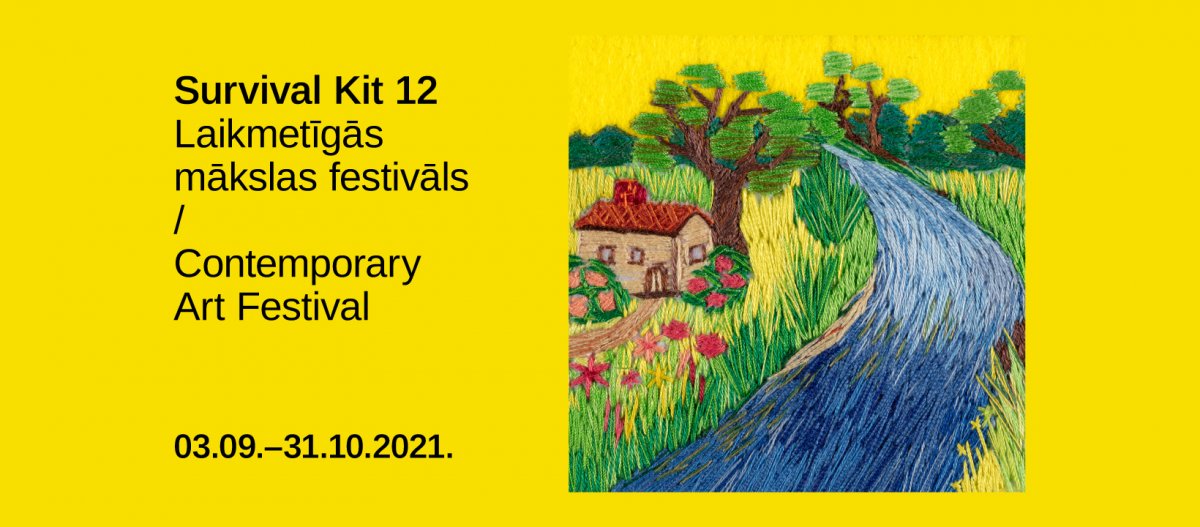
Visual identity by the agency REFLECT. Embroidered work of art by the artist Inese Groševa.
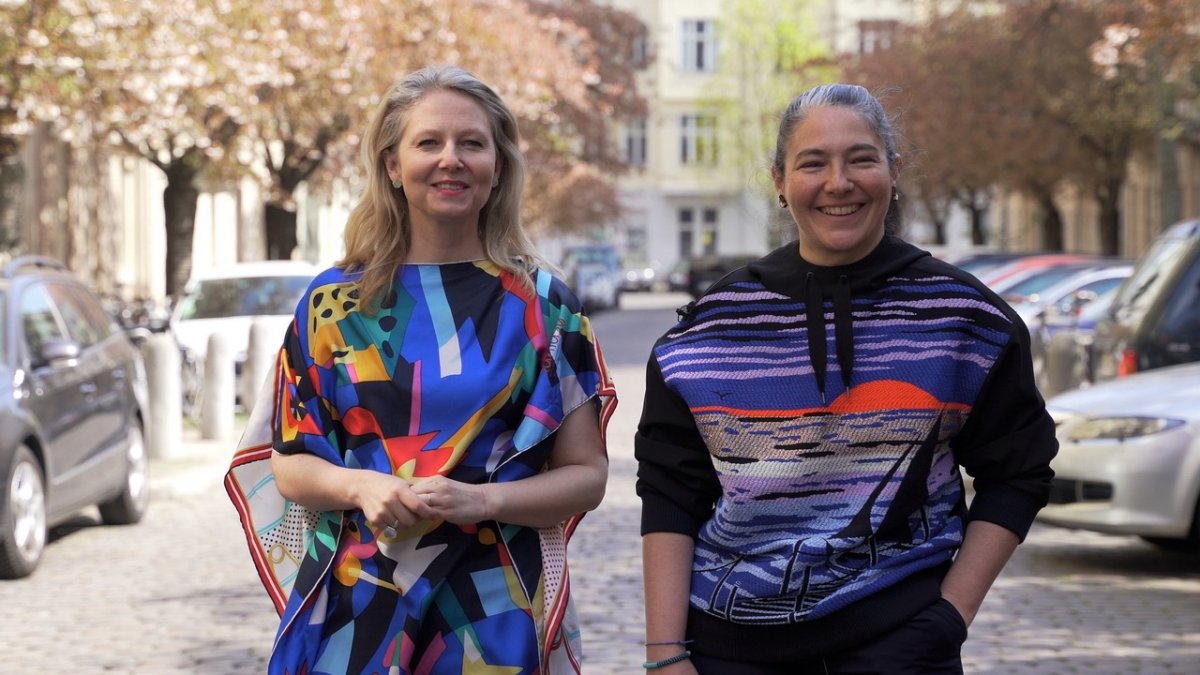
Survival Kit 12 curators, from the left Joanna Warsza and Övül Ö. Durmușoğlu. Photo: Mateusz Nowak & Jagna Nawrocka
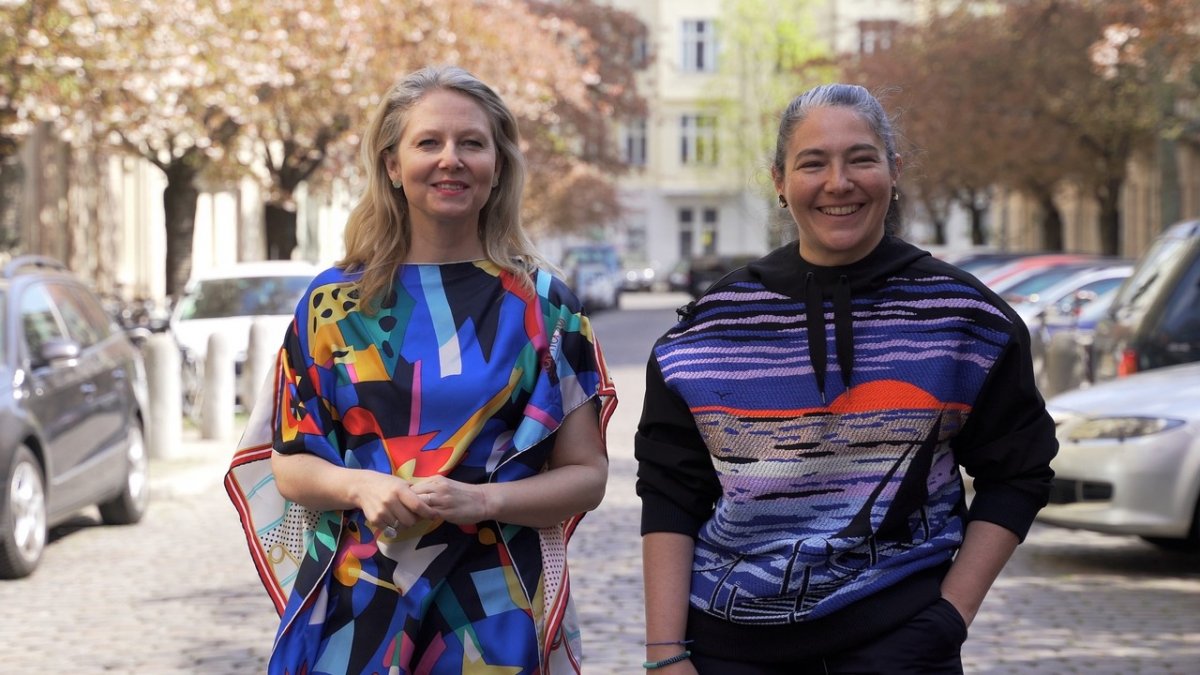
Survival Kit 12 curators, from the left Joanna Warsza and Övül Ö. Durmușoğlu. Photo: Mateusz Nowak & Jagna Nawrocka
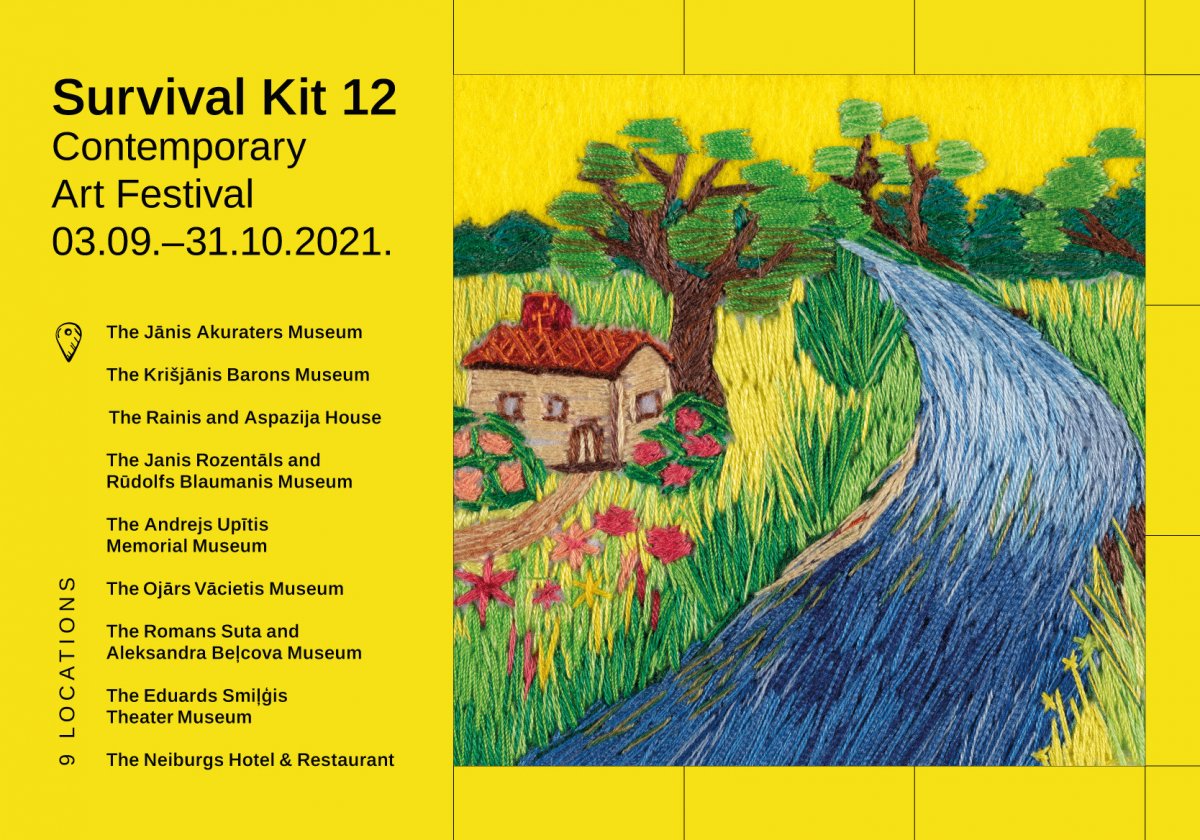
Visual identity by the agency REFLECT. Embroidered work of art by the artist Inese Groševa.
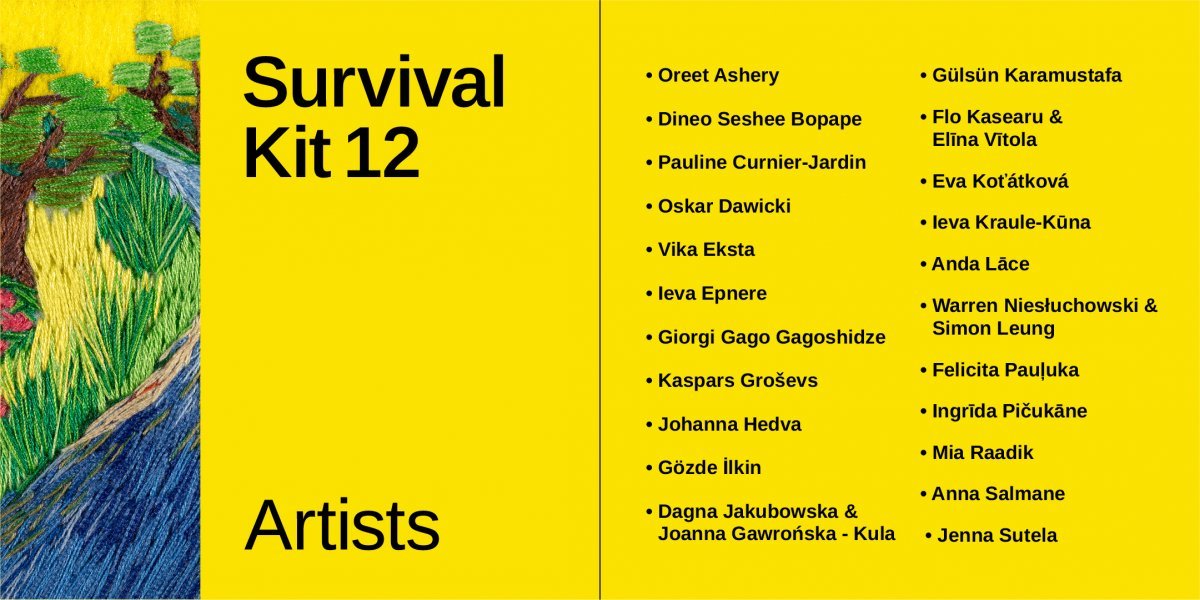
Visual identity by the agency REFLECT. Embroidered work of art by the artist Inese Groševa.
For the twelfth year in a row, we are happy to presents the international art festival Survival Kit. This year instead of visiting empty and abandoned buildings, visitors will be invited to Riga’s apartment memorial museums. The selection of the festival venues is drawing attention to individual stories in the context of collective memory and questions about the aging of society and the infrastructures of care. The festival is curated by Övül Ö. Durmușoğlu and Joanna Warsza from Berlin and will take place from 3 September to 31 October 2021.
Life has never fully submitted to the structures that seek to manage and administer it. It has always succeeded in avoiding this condition, even today, when more than ever, a comprehensive issue of survival and aging has become increasingly important. The metaphor of the “survival kit” suggests a series of questions: How to live in an aging society where discrimination based on one’s age, structural changes in terms of work and care, and – on top of everything, – the virus, co-exist? How can problems, which have been caused by the actions of the previous generation, be solved? What can be done with a political, economic and ecological debt on a planetary scale that must be tackled by the next generations? How can the idea that the human species is disappearing be addressed? How should we look at digital ageism and old people’s homes being segregated from the rest of the society? How can the fear of death and dependence on other people’s favours be overcome? What does it mean to age as a woman, a child, a partner, an artist? We are like an upturned pyramid: European society is growing older, and that includes middle-aged art creators and audiences. Therefore, it is a critical time to construct a strong collective logic and vocabulary of care from our everyday life in order to transgress capitalism’s ill logic that defines who can stay alive.
Since COVID-19 has turned many of us into a part of the same inter-twined fabric, the Italian philosopher Roberto Esposito’s analysis, when looking for a connection between the political concept ‘community’ and epidemiological concept ‘immunity’, raises a new awareness. Keeping in mind the different meanings of the roots of both words ‘munus’ (Esposito explains it as a burden, responsibility, commitment, gift, service, support, performance), in the framework of Survival Kit 12, we would like to imagine a new system of public immunity, which starts with a common fabric of skin, woven by the artists.
The works of the following 25 artists will be exhibited at this year’s festival: Oreet Ashery, Dineo Seshee Bopape, Pauline Curnier-Jardin, Oskar Dawicki, Vika Eksta, Ieva Epnere, Giorgi Gago Gagoshidze, Kaspars Groševs, Johanna Hedva, Gözde İlkin, Dagna Jakubowska & Joanna Gawrońska - Kula, Gülsün Karamustafa, Flo Kasearu & Elīna Vītola, Eva Koťátková, Ieva Kraule-Kūna, Anda Lāce, Warren Niesłuchowski & Simon Leung, Felicita Pauļuka, Ingrīda Pičukāne, Mia Raadik, Anna Salmane and Jenna Sutela.
“The memorial, apartment museums, common to Eastern Europe, seemed to us like appropriate places to ask questions both about memory and memorials, but also life, ageing, ageism, survival, community and immunity. We invite artists to respond with both context-specific and existing works hosted in the rooms of late poets, painters, writers, activists” – say the curators.
The programme of Survival Kit 12 will consist of the contemporary art exhibition, discussions and conversations with artists, as well as guided tours as part of the public programme. The public program will be announced, based on the epidemiological situation.
The festival’s exhibition will be opened to visitors at the Jānis Akuraters Museum, Krišjānis Barons Museum, Rainis and Aspazija House, Janis Rozentāls and Rūdolfs Blaumanis Museum, Andrejs Upītis Memorial Museum, Ojārs Vācietis Museum, Romans Suta and Aleksandra Beļcova Museum, Eduards Smiļģis Theatre Museum and Hotel Neiburgs.
The Festival’s curators Övül Ö. Durmușoğlu and Joanna Warsza live and work in Berlin. They are curators, educators and writers. They co-curated Die Balkone. Life, Art, Pandemic and Proximity, a public art initiative in the windows and balconies of Prenzlauer Berg in Berlin in 2020 and 2021 alongside the third edition of the Autostrada Biennale in Kosovo that continues until 11th September 2021.
Övül Ö. Durmușoğlu is a visiting professor and mentor at the Graduate School of the University of the Arts in Berlin and the University of the Arts in Braunschweig. In her multi-faceted practice as a curator, writer and educator, she researches intersectional forms and narratives of contemporary political subjectivities. Övül was one of the curators for the Steirischer Herbst Festival’s 2018 edition in Graz; curator/director for the YAMA public screen in Istanbul in 2015-16 and artistic director of the Sofia Contemporary ‘Near, Closer, Together: Exercises for a Common Ground Festival’ in 2013. She also curated different programmes for the 10th, 13th and 14th Istanbul Biennials; coordinated and organized different programs and events at Maybe Education and the public program for dOCUMENTA (13). Currently, she is engaged with CA2M Madrid, Kunsthalle Wien and Martin Gropius Bau for different exhibition projects. Originally, from Ankara, she now lives in Berlin.
Joanna Warsza is the Programme Director of CuratorLab at the Konstfack University of the Arts in Stockholm, and an independent curator interested in how art functions politically and socially outside the white cubes. She was the Artistic Director of Public Art Munich 2018, curator of the Georgian Pavilion at the 55th Venice Biennale, head of public programs for Manifesta 10 in St. Petersburg and an associate curator of the 7th Berlin Biennale among others. She is an editor of more than ten publications in the areas of public art, politics, performativity and feminist theory. Lately she co-edited, Red Love. A Reader on Alexandra Kollontai (Konstfack Collection and Sternberg Press, 2020) with Michele Masucci and Maria Lind. Originally from Warsaw, she now lives in Berlin.
Visual identity by the agency REFLECT.
The identity of this year's festival is based on a strong contrast - coming together and individuality. This contrast can be found in a variety of ways - in world processes, in society, and this year it will be present in the festival, which will unite nine unique venues through a single story. This year, unlike for the visual image of the festival, the embroidered work of art by the artist Inese Groševa was chosen as the main visual element, which very significantly depicts the main idea of the festival.
About the festival
Established in 2009, the International Contemporary Art Festival Survival Kit is one of the most visible contemporary art events in the Baltics, attracting more than 10 000 visitors every year. It arose in reaction to the effects of the global economic crisis in Latvia with the aim of calling on society to respond to changes in the contemporary world and consider various survival strategies. Each year, a socially relevant and important theme is selected for the festival.
More about festival: www.survivalkit.lv
The project is supported by the State Culture Capital Foundation, the Riga City Council, Frame Finland, SAHA Association and Goethe Institut Riga.